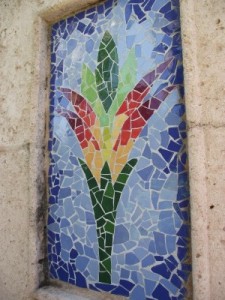
PERSONAL LEARNING PROJECT (350 POINTS OF YOUR FINAL GRADE)
This project is designed to provide you with an opportunity to tailor an assignment to your own learning needs and course-related interests. For this assignment, you will identify an area of social media/PR you want to learn more about, outline a plan of study, and decide on appropriate learning deliverables to demonstrate your mastery of the material. You will then submit this plan to me for approval. Once your study plan has been approved, you will create a personal learning network to guide you in your learning. You may utilize any content you wish including books, web pages, video tutorials, library resources, open educational material, etc. to help you complete your deliverables by the deadline specified in your learning plan. In other words, you will be able to learn the material in the manner, and with the resources of your own choice.
My goal for this assignment is to prepare you for today’s highly competitive and rapidly changing workplace by allowing you to develop experience in directing your own learning. Today, knowledge has a very short shelf life, which means that one of the most important skills you can learn while in college is to become an independent learner. It is my hope that you take this project as an opportunity to help you enhance those skills. It should therefore go without saying that you shouldn’t pick a topic/area you already master for this assignment. Although it would be a way to an easy project and grade, you would simply be cheating yourself and your education.
Though you are welcome (even encouraged) to post any portion of your Personal Learning Project on your own blog, to earn credit for each Part, please use BlackBoard to submit your work.
PART 1 – THE LEARNING PLAN (50 POINTS OF FINAL GRADE)
DUE: February 12, in BlackBoard
For this part of the assignment, you will identify an area of social media/PR you want to learn more about, outline a plan of study, and decide on appropriate learning deliverables to demonstrate your mastery of the material. Please use this template when designing your learning plan. You’ll be evaluated based on the thoroughness of your plan. To help you get started, I’ve listed a few examples of possible project ideas below.
- Researching social media applications for nonprofits and designing a social media training session (the deliverable) for a local nonprofit interested in learning how to engage its stakeholders via social media. This would more than likely be a group project.
- Researching how journalism has changed with the advent of social media, and offering suggestions / a workshop to the campus newspaper for how to benefit from social media.
- Researching QR (quick response) applications for small businesses, offering your services to a local business and designing a concept for QR campaign tailored to their needs.
PART 2 – THE PERSONAL LEARNING NETWORK (100 POINTS OF FINAL GRADE)
DUE: March 18, in BlackBoard
Your personal learning network (PLN) needs to include a Twitter, blog and social bookmarking component. We will discuss how to create a PLN in much more detail in class. You also need to identify blogs, web sites, and social bookmarks that are relevant to your project and subscribe to them. You may even want to subscribe to a Google Alert on your topic (optional). At the end of the semester, you will need to hand in a UPDATED description of your personal learning network along with your deliverables. You’ll be evaluated based on the depth and breadth of the personal learning network you built. In order to hand this in, create a list of people you follow on:
- Twitter: list the people in your Twitter PLN with their Twitter UserId. Only list people that pertain to your project (i.e. don’t list your buddies here)
- Blogs: list the bloggers you followed for this project. Identify them by a) name, b) blog URL, and c) blog name.
- Social bookmarking sites: list the people you follow on Delicious, Diigo or any other social bookmarking site. Again, only list people you followed for this particular project. List them with their social bookmarking URL.
- Any other social media sites/platforms
PART 3 – THE PLN PRESENTATION (50 POINTS OF FINAL GRADE)
DUE: March 22, in class
You will give a 5-minute presentation in which you will present the learning network you’ve created thus far. You should start off with a brief description of the project you’ve picked for your personal learning project before presenting your network. Please create a separate slide for your Twitter, social bookmarking, and blogging network and include the following information. You’ll be evaluated based on the progress made on your PLN and on your presentation overall.
- Twitter network slide
- How many experts on your project’s topic area are you following?
- List at least five of those experts by their Twitter handle
- During your presentation, give an example of useful info (related to your project’s topic area)
eachONE of them has tweeted about. - Social Bookmarking network slide
- How many experts on your project’s topic area are you following on Delicious, Diigo or another social bookmarking service?
- List at least five of those experts by their Social Bookmarking UserID.
- During your presentation, give an example of useful info (related to your project’s topic area)
eachONE of them has bookmarked. - Blogging network slide
- How many bloggers who are experts on your project’s topic area are you subscribing to with your feedreader?
- List at least five of those bloggers (name the title of their blog)
- During your presentation, give an example of useful info (related to your project’s topic area)
eachONE of them has blogged about.
As you listen to your classmates’ PLN presentations, take special note of members of their PLNs who might be useful for you to learn more about. Additionally, offer suggestions to your peers regarding members of your own PLN who might benefit them in their projects.
PART 4 –PROJECT DELIVERABLES (100 POINTS OF FINAL GRADE)
DUE: April 15, in BlackBoard
Your project deliverables are identified in your personal learning plan and approved in consultation with me. Remember to include an UPDATED version of your PLN that you submitted in Part 2; identify which people you have added to your network. If all of your deliverables are in digital form, simply submit (in BlackBoard) the URL(s) to those deliverables. Be sure to indicate what each URL refers to. You’ll be evaluated based on the quality of your final product.
PART 5 –PROJECT PRESENTATIONS (50 POINTS OF FINAL GRADE)
DUE: April 17 & 19, in class
At the end of the semester you will present your personal learning project deliverables to the class. For this assignment, you will need to create a professional 10-minute presentation in which you will introduce the project you worked on, explain the process involved in creating your deliverable, discuss how your PLN helped you accomplish that process, and showcase your final project. You’ll be evaluated based on the extend to which you address those four areas and on the level of professionalism displayed in your presentation.
(NOTE: Many thanks to Dr. Corinne Weisgerber for permitting me to use, with very slight adaptation, the Personal Learning Project from her Spring 2011 Social Media for PR class at another SEU: St. Edwards University.)



























